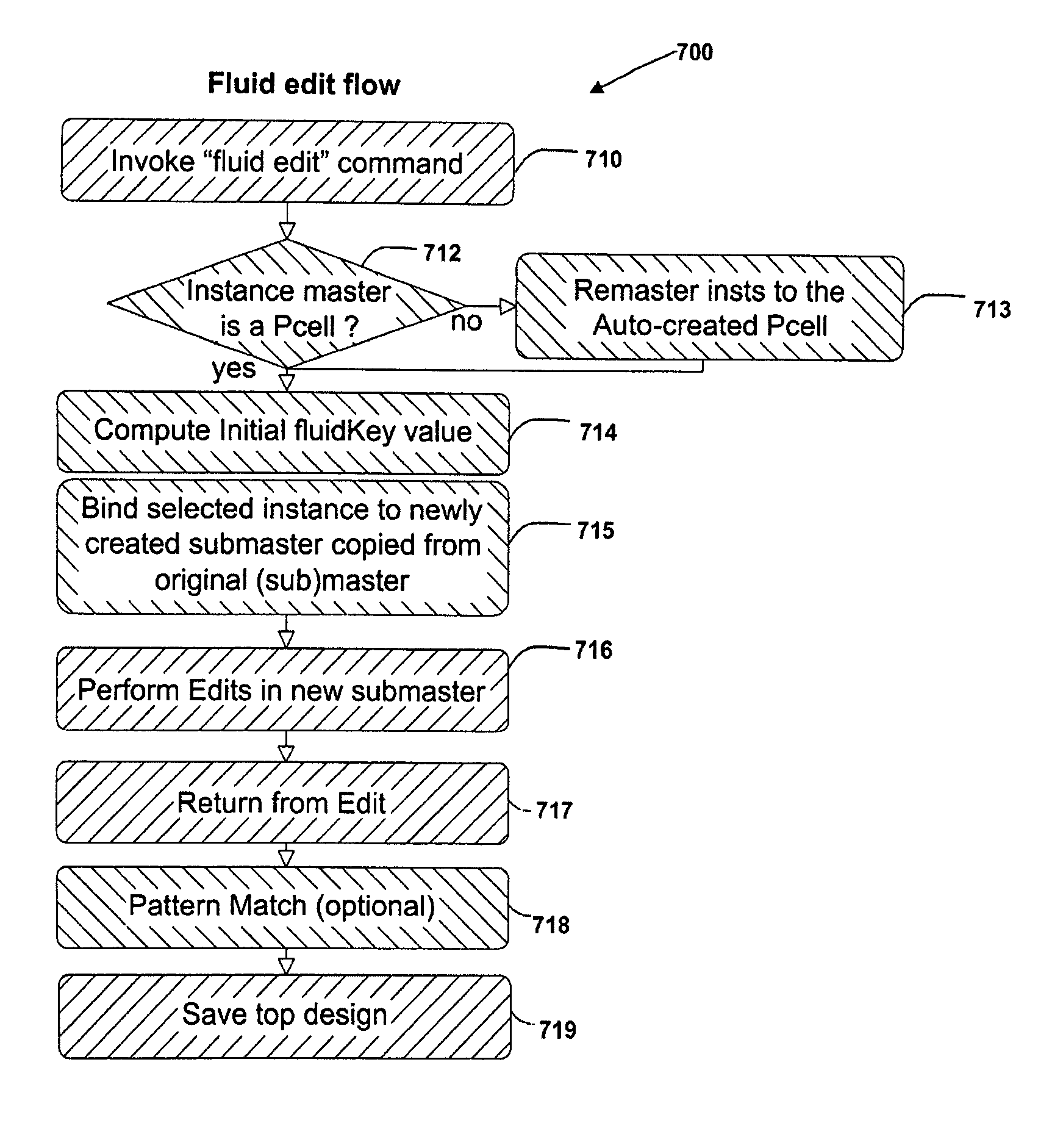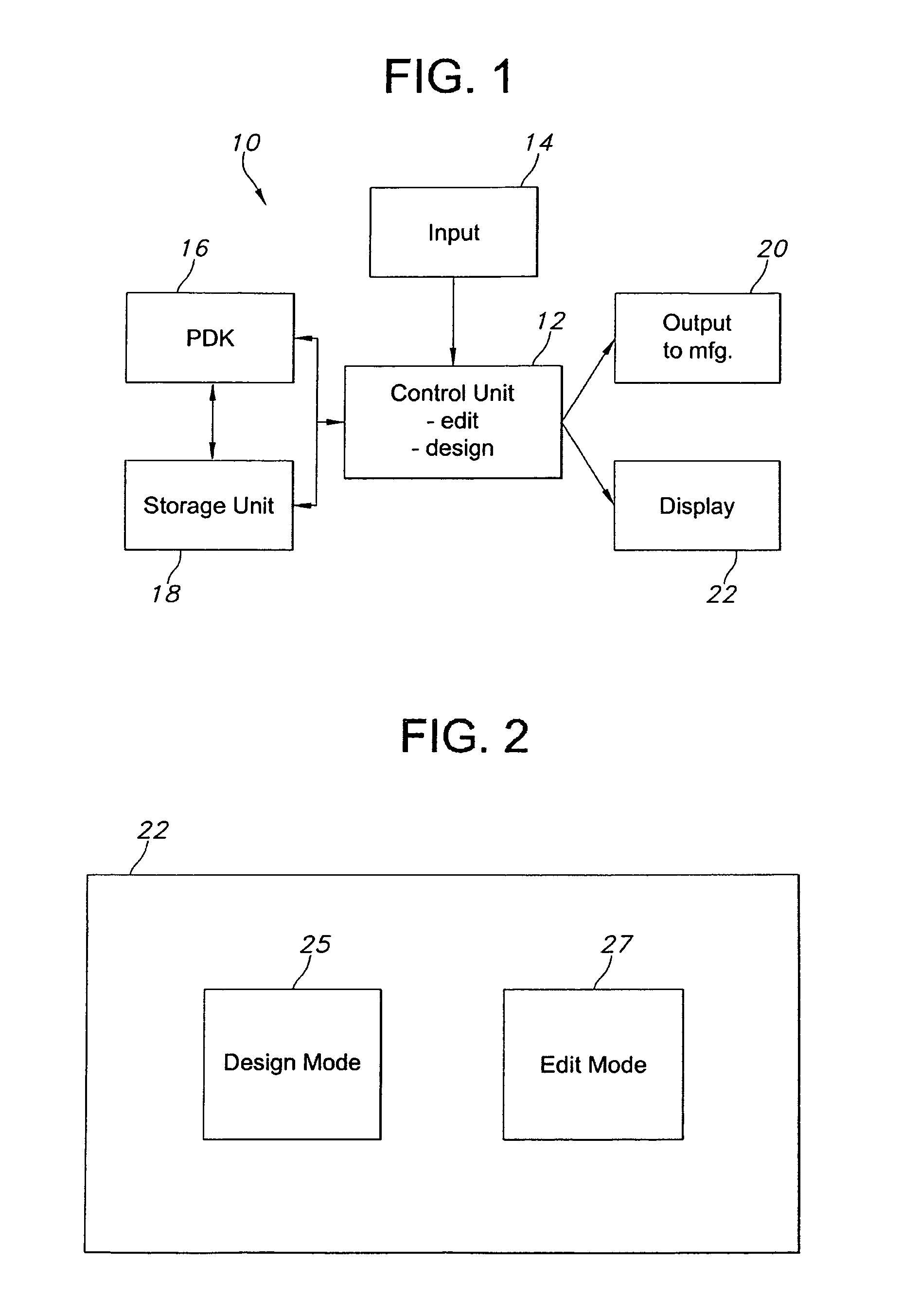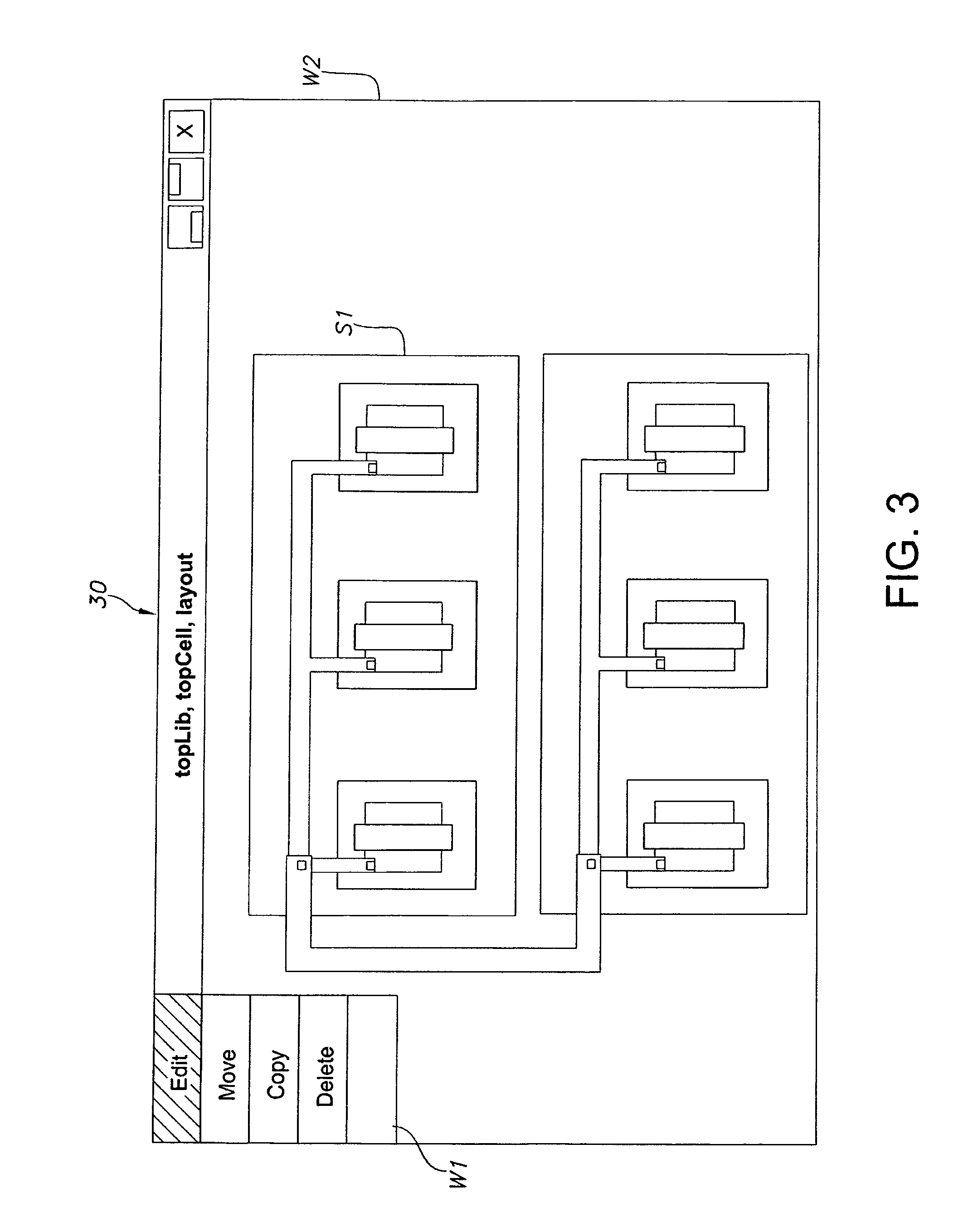Systems and methods of editing cells of an electronic circuit design
a technology of electronic circuit design and cell, applied in the field of electronic circuit design and manufacturing, can solve the problems of increasing the visual complexity of the design, design tools running more slowly, and existing approaches that do not permit editing of submaster content in layout editors
- Summary
- Abstract
- Description
- Claims
- Application Information
AI Technical Summary
Benefits of technology
Problems solved by technology
Method used
Image
Examples
example 1
Retaining Fluid Edits after Abutment
[0094]FIG. 8 illustrates an initial design state, where no fluid edits have been done. The relevant layout design is deslib / top / layout cellview. Here, three (3) instances of pcell moslib / mos / layout (I1, I2, and I3) have been instantiated. I1 and I2 have length parameter (L=1), while I3 has length parameter=3. Assume the default length parameter value is 0.5, and assume moslib / mos / layout pcell also has srcAbut and drainAbut boolean parameters default value set to false. Here, the parameters stored on the instance headers instHeaders may take the following values, for example:
subIH1: L=1
subIH2: L=3
[0095]FIG. 9 illustrates the design state after instance I2 has been fluid edited. In FIG. 9, the user initiates a fluid edit by selecting instance I2, and invoking the fluidEdit command (or whichever means of fluid-edit initiation the EDA tool chooses to implement). This will set the I2 fluidKey parameter to “deslib / top / layout, 1” and behind the scenes in...
example 2
Hierarchical Fluid Edits
[0104]FIG. 15 illustrates a design named (libTop, cellTop, layout) containing three instances of the same cellA, and one instance named Bt of cell cellB. CellA also contains one instance of cellB. Here, there is illustrated a defect or “hotspot” region (star) in the left bottom region of the chip labeled defect1, and a second defect in the top right region of the chip labeled defect2. The defects were identified by a DFM (design for manufacturing) hotspot analysis tool. This illustrates how fluid edits could be applied hierarchically to fix local DFM issues while retaining design hierarchy.
[0105]Suppose (libA, cellA, layout) is not a pcell, but (libB, cellB, layout) is a pcell. In order to fix defect1 in the bottom left corner of the design, a user can take the following steps. First, the user (or tool) can fluid edit the master of instance A1, and then further fluid edit the instance B. Having fixed the problem in the fluid edited instance of B, the user can...
PUM
 Login to View More
Login to View More Abstract
Description
Claims
Application Information
 Login to View More
Login to View More - R&D
- Intellectual Property
- Life Sciences
- Materials
- Tech Scout
- Unparalleled Data Quality
- Higher Quality Content
- 60% Fewer Hallucinations
Browse by: Latest US Patents, China's latest patents, Technical Efficacy Thesaurus, Application Domain, Technology Topic, Popular Technical Reports.
© 2025 PatSnap. All rights reserved.Legal|Privacy policy|Modern Slavery Act Transparency Statement|Sitemap|About US| Contact US: help@patsnap.com



